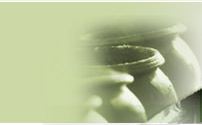

|
| IAAM Historical Perspective |
  
|
Sri Lanka is a country with a very old civilization and Ayurveda has been a widely practiced medical system through out the ages.
Deshiya Chikitsa was the earliest system of medicine that existed in Sri Lanka before the advent of Ayurveda. It was handed down from generation to generation and in the course of time Deshiya Chikitsa became fused with Ayurveda.
Ayurveda is considered to have been formally handed over to Sri Lanka during the 3rd century BC with the introduction of Buddhism from North India during the period of King Devanampiyatissa (247-207 BC). Since then it has merged with the indigenous system of medicine that prevailed in Sri Lanka, and has been enhanced, praticed and preserved in an unbroken tradition up to today. Historical records show that there has been an exchange of information on Ayurveda between India and Sri Lanka long before its formal introduction.Sri Lanka's written history begins with the story of the arrival of King Vijaya around 537 BC. The stories connected to his settlements have continued as history and legend for over 2500 years. However during the prehistoric era, Sri Lanka had a well-developed civilization in comparison to other countries in the world. Agriculture, architecture, irrigation, and the medical system were well developed at that time. In addition it is believed that they had means/ facilities of traveling through air. These vehicles were called Dandu Monara Yantraya. During this period the Emperor Maha Bali, Tharaka and Rawana ruled Sri Lanka. They ruled some parts of India as well.
Pulasthi Rishi, the son of the Emperor Tharaka and father of the Emperor Rawana lived about 4400 years ago in Sri Lanka. He is known to have been a skilled physician. Historical Indian Ayurveda texts mention that Pulasthi Rishi participated in the 1st conference of Rishis (seekers of knowledge) held in the Himalaya Kingdom (India) and that he was from Sri Lanka. Son of Pulasthi Rishi, the Emperor Rawana ruled Sri Lanka around 4394 years ago. He was also a physician and is said to have written 3 Ayurveda medical books. They are named as Arka prakashaya, Kumaratantraya, Nadi prakashaya. He was also the inventor of the distillation process.
When King Vijaya came to Sri Lanka (547 BC) with his people, he is said to have brought along some Ayurveda medicine as well. It was however, during the period of King Devanampiyatissa (247 BC) that Buddhism was brought to Sri Lanka and with it, Ayurveda.
King Devanampiyatissa established a hospital for the Buddhist monks at Mihintale. That was the 1st hospital in Sri Lanka and it is one of the oldest hospitals to date, in the world. Even today the ruins of this hospital can be seen. The 1st book on Ayurveda in Sri Lanka is the Sarartha Sangrahaya, which was composed by King Buddhadasa (362 - 409 AD). It contains a detailed account of the preparation of drugs, diagnosis, treatment of diseases, and Ayurveda surgery. King Buddhadasa was a famed Ayurveda physician and surgeon. Later Buddhist monks practiced Ayurveda and wrote several books and promoted Ayurveda in Sri Lanka.
Ayurveda and Buddhism are two interlinked philosophies that Sri Lanka received from the India. While Buddhism ceased to be a major influence in India, the roots of Buddhism were firmly planted in Sri Lanka, where it was preserved and continued to thrive, along with the practice of Ayurveda.
At the beginning set Ayurveda was preserved through the oral tradition of memorizing the body of principles and prescriptions. These principles and prescriptions were handed down from one generation to another. In order to make it easier to memorize, the principles and prescriptions were in rhyme (Stazas) called "Sloka". It was subsequently codified (written down), first in Sanskrit language. "Charaka Sauhita" is a popular text on Ayurveda and is now available in several languages such as Sinhala and English.